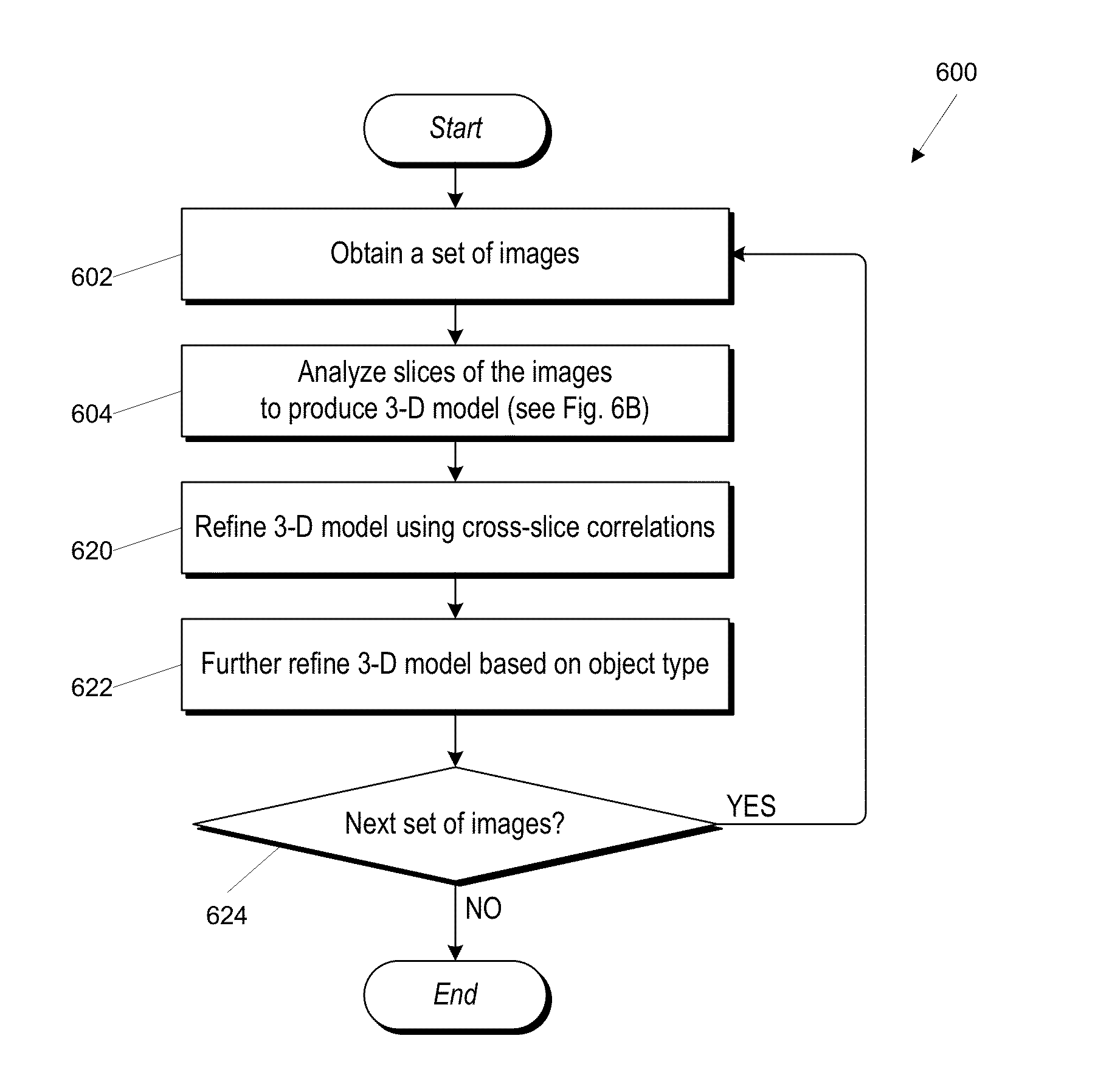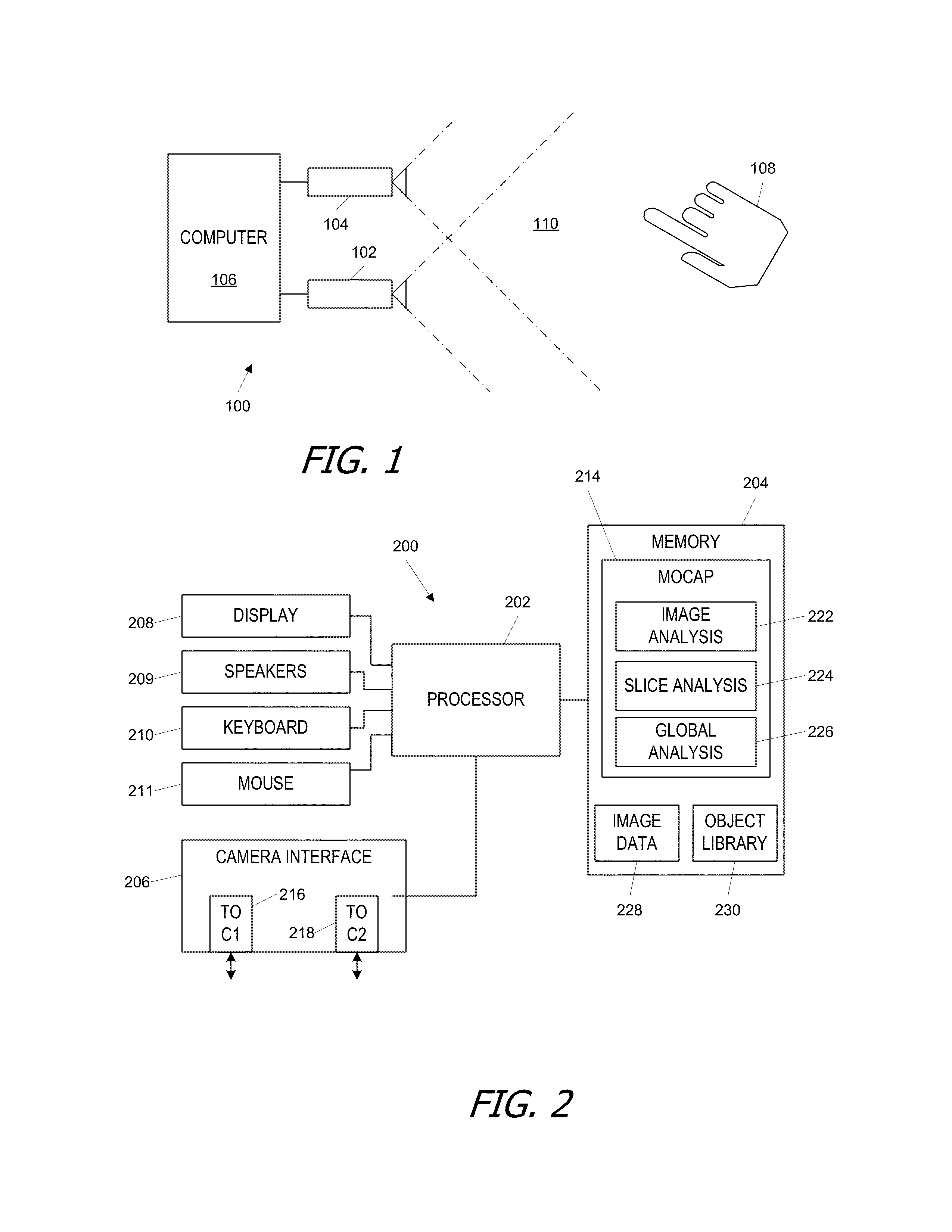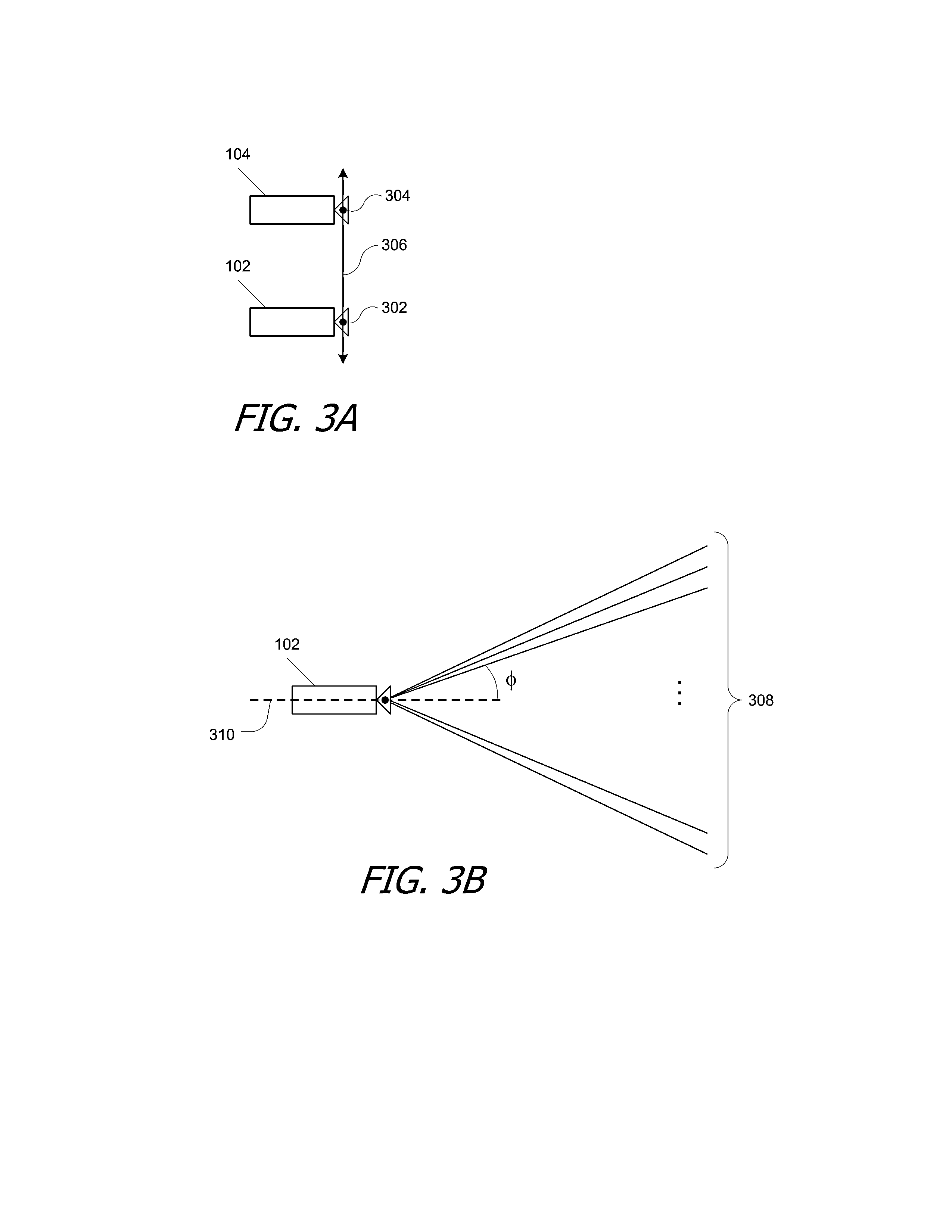Motion capture using cross-sections of an object
a cross-sectional, object technology, applied in image analysis, image enhancement, details involving processing steps, etc., can solve the problems of affecting the subject's natural movement, cumbersome markers or sensors, and system construction costs
- Summary
- Abstract
- Description
- Claims
- Application Information
AI Technical Summary
Benefits of technology
Problems solved by technology
Method used
Image
Examples
Embodiment Construction
[0030]Embodiments of the present invention relate to methods and systems for capturing motion and / or determining position of an object using small amounts of information. For example, an outline of an object's shape, or silhouette, as seen from a particular vantage point can be used to define tangent lines to the object from that vantage point in various planes, referred to herein as “slices.” Using as few as two different vantage points, four (or more) tangent lines from the vantage points to the object can be obtained in a given slice. From these four (or more) tangent lines, it is possible to determine the position of the object in the slice and to approximate its cross-section in the slice, e.g., using one or more ellipses or other simple closed curves. As another example, locations of points on an object's surface in a particular slice can be determined directly (e.g., using a time-of-flight camera), and the position and shape of a cross-section of the object in the slice can b...
PUM
 Login to View More
Login to View More Abstract
Description
Claims
Application Information
 Login to View More
Login to View More - R&D
- Intellectual Property
- Life Sciences
- Materials
- Tech Scout
- Unparalleled Data Quality
- Higher Quality Content
- 60% Fewer Hallucinations
Browse by: Latest US Patents, China's latest patents, Technical Efficacy Thesaurus, Application Domain, Technology Topic, Popular Technical Reports.
© 2025 PatSnap. All rights reserved.Legal|Privacy policy|Modern Slavery Act Transparency Statement|Sitemap|About US| Contact US: help@patsnap.com



